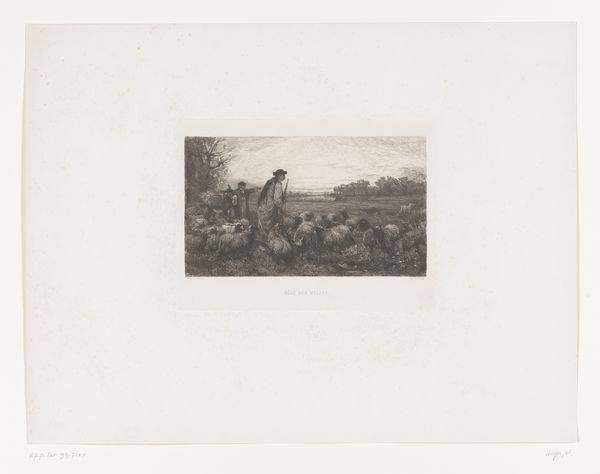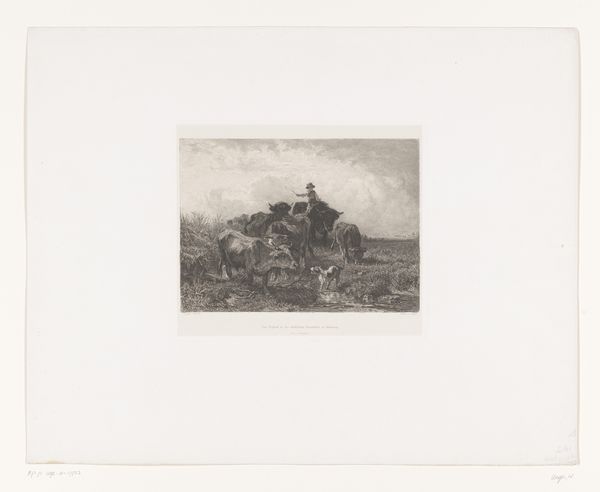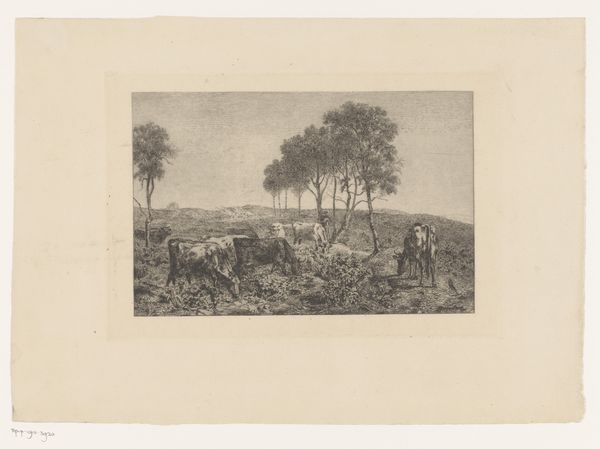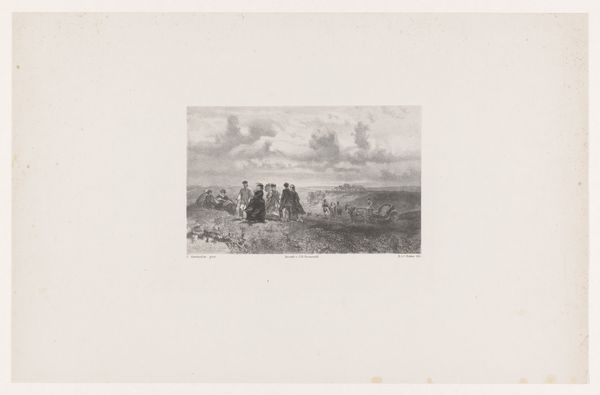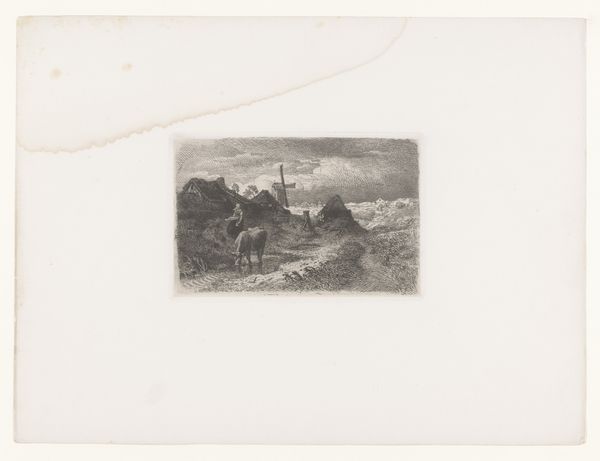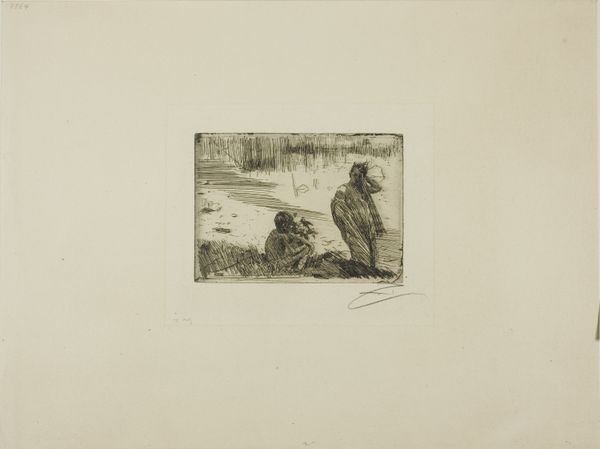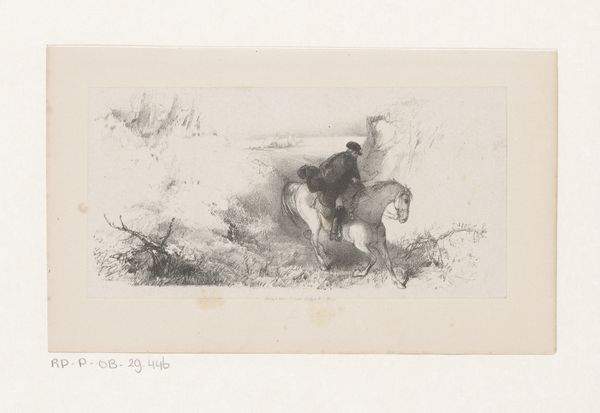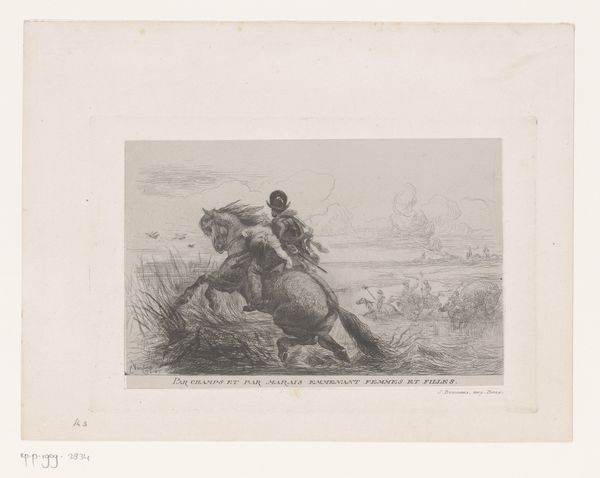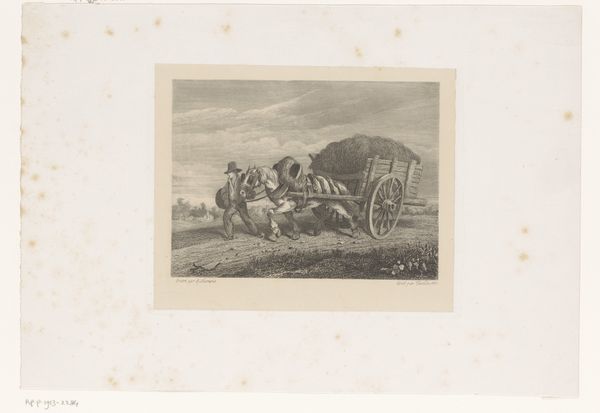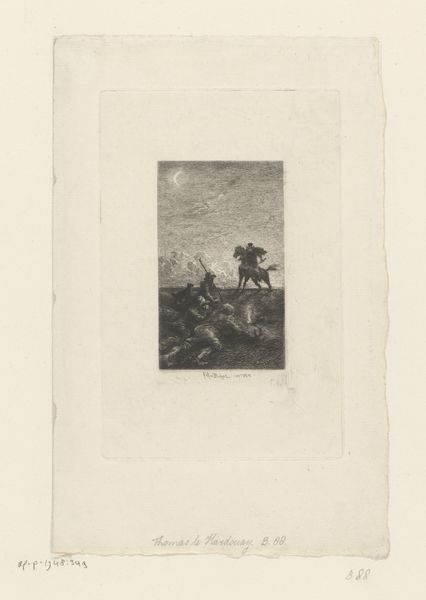
drawing, graphite
#
drawing
#
dog
#
landscape
#
figuration
#
graphite
#
realism
Dimensions: height 313 mm, width 449 mm
Copyright: Rijks Museum: Open Domain
Curator: This graphite drawing by Joseph Félon, created around 1849, is titled "Herder op een hek in een landschap," or "Shepherd on a fence in a landscape." It strikes me immediately as melancholic. The overcast sky and muted tones give it a sense of quiet solitude. Editor: It’s definitely evocative. The hooded figure perched on that rather rough-hewn fence feels very staged though, despite the landscape's supposed realism. Was there a strong urban market for idyllic rural scenes like this at the time? Curator: Precisely. Think about the symbolism: the shepherd as a guardian figure, yes, even Christ-like, watching over the flock. The dog, eternally faithful. The fence acting as a symbolic boundary between civilization and untamed nature, but one easily straddled. Editor: Interesting how the "untamed nature" is pretty gentle-looking! No real threat there. This feels more about creating a palatable image of rural life for a specific urban, probably bourgeois, audience. A life that offers a break, but isn't too challenging. Curator: That may well have been a desired effect, though I see beyond that. The shepherd, seated above the landscape with watchful eyes, could symbolize authority over it and connection to the land, an appeal to notions of national identity being deeply rooted in the countryside and its perceived simple virtues. The historical and social context must be considered, of course, but these symbols reach back far. Editor: Sure, but how much were viewers *actually* contemplating these deep symbols versus just enjoying a picture of a sheep and a cute dog? The industrial revolution was picking up speed; cities were expanding rapidly. Country scenes were becoming commodities and the social impact is difficult to deny. Curator: Perhaps. It could even symbolize a longing for simpler times, a yearning for what was perceived as lost in the rapidly changing world, and thus, these themes gained an increased value and deeper resonance with the viewers. It isn't *just* "a picture". The scene provides access to the contemplation of our collective experience of memory. Editor: All these layers! It’s fascinating how much a seemingly straightforward drawing can reveal about anxieties of the period, though the real genius might lie in selling people a nice idea rather than a challenge to the status quo. Curator: I agree that its lasting power probably owes something to this successful confluence.
Comments
No comments
Be the first to comment and join the conversation on the ultimate creative platform.
